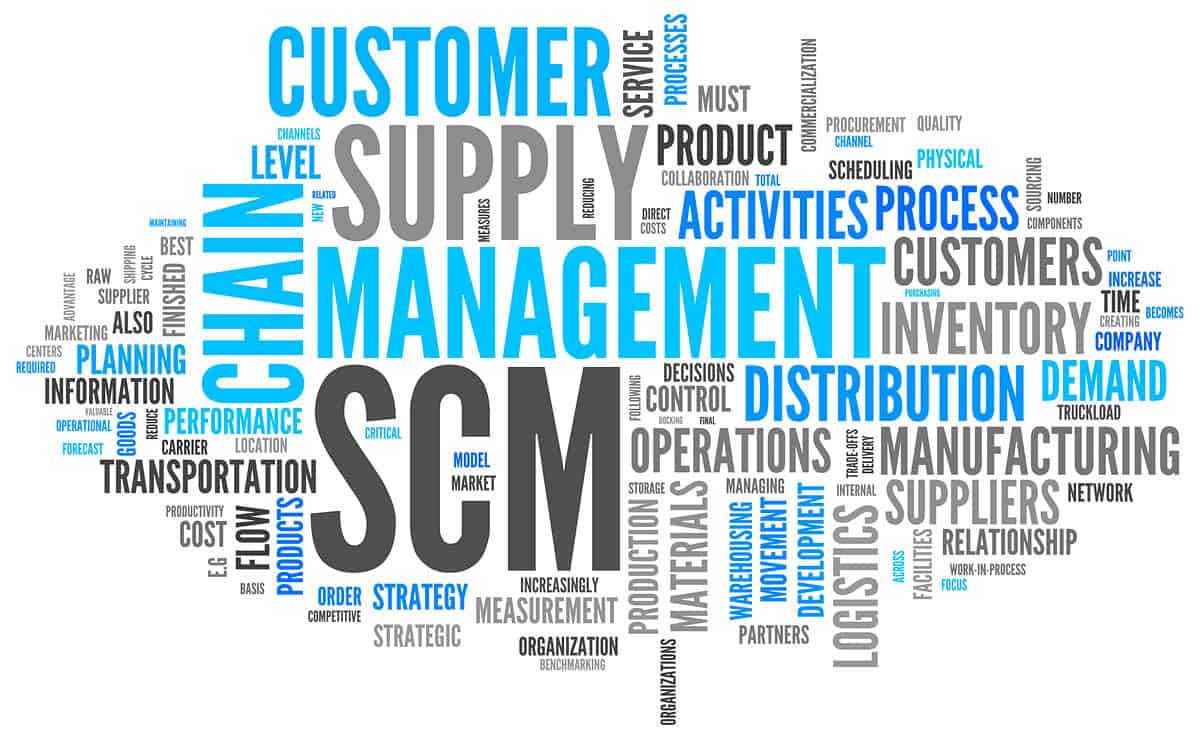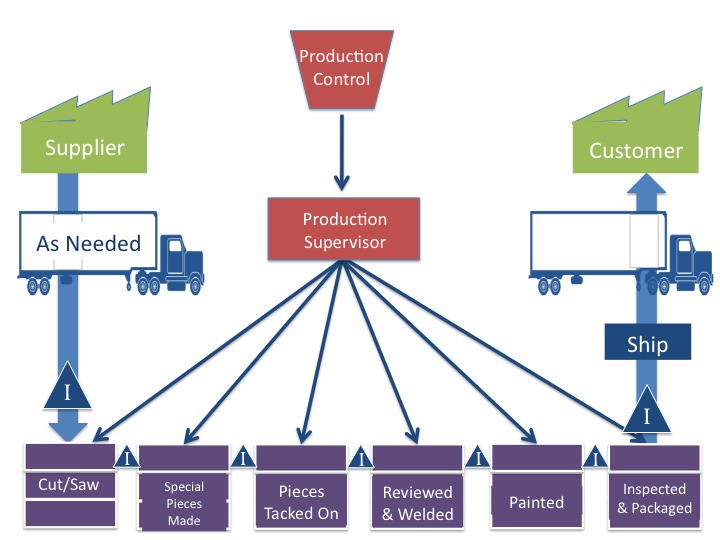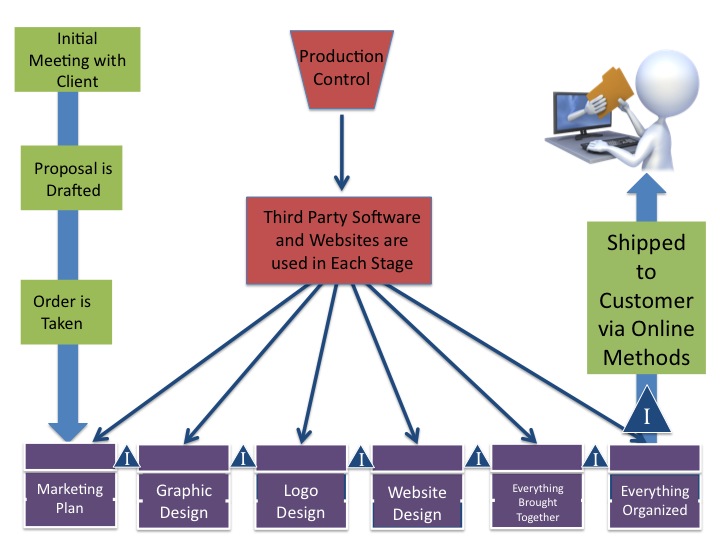Supply Chain Management In The Service Industry
There seems to be confusion when it comes to the term “supply chain.” Many people picture tractor-trailers, large container ships, forklifts, and huge warehouses – but what about the service industry? What many do not realize is that a “supply chain” is not only for tangible products, but also for services offered. With the constant explosion of tech start-ups, many young entrepreneurs do not have a business background for which to build a working supply chain model to use in their new venture. The key to building a successful business is, of course, the product, but also a reliable method for continuing to make or provide that product or service. This is where supply chain and logistics come into play.
THE SUPPLY CHAIN DEFINED
Let us start off with the basics in answering, “What is a supply chain?” One of the clearest definitions comes from the Small Business Advancement National Center of the University of Central Arkansas, which states:
“A supply chain consists of all parties involved, directly or indirectly, in fulfilling a customer request. The supply chain not only includes the manufacturer and suppliers, but also transporters, warehouses, retailers, and customers themselves. Within each organization, such as a manufacturer, the supply chain includes all functions involved in receiving and filling a customer request. These functions include, but are not limited to, new product development, marketing, operations, distribution, finance, and customer service.”
– Small Business Advancement National Center, 2014
DIFFERENCES IN THE SERVICE AND MANUFACTURING INDUSTRY SUPPLY CHAINS
Now that we have the basics of a supply chain down, let’s move on to the differences between the supply chains in the manufacturing versus the service industry. Elliot Taylor, a writer for the Houston Chronicle, states there are four main differences within the two industries in the areas of inputs, logistics, finished goods, and the optimization of supply chains. For inputs, the difference between service and manufacturing is that the latter requires an input of physical labor (packaging, shipping, etc.) and the service industry requires input of labor in the form of developing relationships or “manipulating information.”2 In logistics, manufacturers move physical material while in the service industry, no physical product is moved but rather information is exchanged via phone, email, and more.2 Taylor does point out that for service industries, new software and tools are used to “speed the flow of communication.”2 Finished goods are one of the largest differences between the two industries. In manufacturing, a finished good is a raw material that has been “completely transformed” whereas in a service industry, it is a “closed file.”2 In the category of optimization, however, both the manufacturing and the service industry are different but similar at the same time – both of these industries work to improve their operations such as the speed of delivery or reducing costs.2 By reducing bottlenecks and finding better prices on raw materials, manufacturers better optimize their business. By building better partnerships to help in the areas where a service company is not strong, they better optimize their business and help “eliminate virtual bottlenecks.”2
“Service firms have different operations requirements from manufacturers. Companies that maintain or repair things, sell consulting, or provide health care or other services generally have higher labor content and lower investments in plants and equipment.”3 For this reason, a service-based company’s most important asset is their people. It is not just the employees, but also the relationships with other businesses that are extremely important to the continued success of a firm. A service company must work hard to keep employees, business partners, and other people surrounding the company happy. My first job in high school was working for a fast food company (as are many people’s first job). This company was very good at offering incentives to the ground level employees to keep them happy. Gift certificates, cash prizes, and other items were offered to keep employees motivated. This fast food chain knew that happy employees translated into happy customers. Consider a way to encourage your employees to stay happy about their job.
A MANUFACTURING COMPANY SUPPLY CHAIN EXAMPLE
A great example of a manufacturing company with a supply chain would be a metal fabrication shop. Metal fabricators take raw pieces of scrap metal and turn them into a finished product for another company to use in the construction of their final product. Metal fabrication companies are generally in the middle of a different company’s supply chain, but also have a supply chain of their own.
For example, let us say a real estate development and construction firm is hired to either renovate a building or build a new facility from scratch. From there, the architects make simple drawings of everything needed to complete the building, including fabricated metal and special parts. The company then sends out a request for proposal (RFP)to several different contractors to find the best fit within the correct price range. A company, such as a metal fabricator, will develop a “cost estimate” from the architect’s blueprints and submit a price to the development/construction firm. To get the correct price, the metal fabricators must first get the sub-prices in the metals division. The price of metal constantly changes, which means the cost of goods sold (or COGS) is also constantly changing. This process of finding prices helps a metal fabricator develop the most accurate price so both companies can determine their overall costs. After the metal fabricator has won the contract, they must start the submittal process. A metal fabrication shop may send 2-3 different drawings over to the firm for approval. In addition many metal fabrication shops specialize in custom metal fabrication, which means every job is different, and also means that many times it will take more than one attempt to gain an approval on the drawings. The metal fabrication shop must now finalize a deal with the metal vendor they have chosen and decide on a delivery date.
Figure 1: Floor Plan & Supply Chain for Manufacturing Industry
Once the raw materials (metal) arrive at the shop, the metal is unloaded and cut based on the approved blueprints. This is also the stage where smaller custom parts are made and fashioned in a special designated area. Next, the extra pieces are tacked onto the cut metal beams and sent down the line for review. Once an employee reviews the blueprints to make sure the pieces were connected in the right area, everything is welded together. At this point, some companies need the metal painted in rust protectant or perhaps a color to match other areas of the building. The parts are then loaded onto a truck and delivered to the proper location. Figure 1 gives a visual of how this process works.
A SERVICE COMPANY SUPPLY CHAIN EXAMPLE
Now we will take a look at the supply chain of a service based company. We will use the example of a marketing firm that specializes in website and logo design as well as branding. In a company such as this, there is a process of obtaining supplies, but the supplies are generally software and online tools.
A marketing firm is a service company, which means the supply chain focuses mainly on human interaction instead of large physical products using various suppliers. The production system is based on a pull strategy where the customer initiates the demand. Logistically, the services are customized depending on the need of each individual client (much like the metal fabricator’s different clients have different demands). Customer relations are critical to success and should be one of the main priorities. The supplies for a marketing firm are made from a combination of software, hardware, and print materials, meaning the inventory will remain low. The difference for this company, as opposed to a metal fabricator, is that a “finished good” means the website, print materials, and marketing report is delivered to the client which translates to a finished product. Generally speaking, each client will have different requirements for their marketing, which means there is no definite timeline.
Figure 2: Floor Plan & Supply Chain of a Marketing Firm
Figure 2 gives a visual of the process in the marketing firm. Just as the same metal part is transferred from place to place within the metal shop, the “marketing plan” makes its way to each department, gaining value along the way with the addition of a website, logo, and more.
One of the main differences between these two examples is that the metal fabrication shop uses suppliers at the beginning and end of their stage whereas the marketing firm uses different suppliers for each stage. For example, a special application may need to be added into the website design stage. For this, the designer will go to a third-party application manufacturer and buy the required pieces needed. At the end of the process, the website, logo, and marketing plan are “packaged together” on a computer and the file is sent electronically to the customer. In addition, the client may choose to let the marketing firm monitor the progress of their advertising campaign in which case the firm may use a third-party such as Google Analytics or a billboard company to display the advertisements that were created.
CREATING A SUPPLY CHAIN FOR YOUR START UP
Now that you understand the basics of value adding and supply chains, let’s look at some important points to remember when developing a supply chain.
At the core of a supply chain are the relationships the company builds with their suppliers. With advancements in online communication, it is no longer necessary to only work with suppliers in your hometown. Consider looking at suppliers in other states and even overseas that help compliment the areas your firm is not as strong in. If you respect your suppliers, they will in turn respect you.
Also, consider the costs of suppliers. There are many software and online tools to help collaborate on projects, such as Basecamp and Smartsheet (refer to links below), but be sure to factor in the cost of these tools. For some projects, it may make sense to use third-party online applications, but for other projects it may not. If business is slow, then eliminate some of these applications. Other times, it may make sense to incorporate more tools to help finish a project.
Before spending money on online applications, however, be sure to research the free tools available online. Companies such as Google offer many free tools such as Google docs, video conferencing, and more.
Building a supply chain in the service industry means making partnerships. Find a reliable printing service for when you need them, a reliable shipping company for when a client needs hard copies, or other suppliers you may need down the road. Transforming your start-up into a successful business starts with being prepared for anything that may happen. As your company grows, you may need to incorporate actual physical suppliers into your supply chain. When this step happens, be sure to research each supplier and focus on building a lasting partnership with mutual trust and respect.
References:
1 Small Business Advancement National Center. (2003). What is a supply chain? The University of Central Arkansas. Retrieved from http://www.sbaer.uca.edu/index.php/publications/
2 Taylor, E. (2014). Differences in supply chain designs for a manufacturing industry vs. a service industry. The Houston Chronicle: Managing Employees. Retrieved from http://smallbusiness.chron.com/differences-supply-chain-designs-manufacturing-industry-vs-service-industry-14610.html
3 Bangs, D.H. (2005). Business plans made easy, third edition. Canada: Entrepreneur Media, Inc.
4 Basecamp – Online Collaborating Document Tool. www.basecamp.com
5 Smartsheet – Online Collaborating Document Tool. www.smartsheet.com
*This article originally appeared in a 2014 marketing blog from David Griffin



